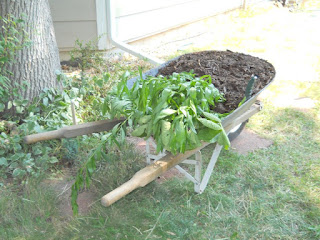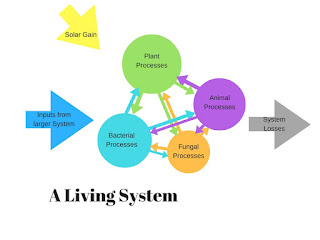A Business Plan for Pat the Gardener
Pat the Gardener
will be offering the service of converting old fashioned landscapes
into thriving habitats. Most potential clients will not be able to afford a permaculture design and installation costing thousands
of dollars. More likely, people
interested in healing nature and producing abundance will want Pat’s
assistance on a regular basis using small and slow steps to convert
their landscape.
We will be able to ask potential clients to hire Pat as a way heal nature and produce the abundance. It is a way that our community can come together to find a place for all our residents.
Let’s say that Pat charged $100.00 per month for the landscaping service. For that fee Pat would spend 4 hours a month. During the spring through planting season and after the first hard frost that might be a four hour block of time each month building gardens and planting. During the growing season that might be an hour a week to keep things looking neat. If Pat were to spend half of the available working hours providing this service there is a potential of 20 clients providing a base of $2,000 per month for ½ time work. The other half of Pat’s time would then be available to do different kinds of projects such as building greenhouses and chicken coops or major landscape renovations.
As the Cook and the Gardener Partnership (CGP) acquires additional clients and as the food truck sales increase they can begin a process of bringing on additional partners, developing the skills of these new partners and increasing the ability of CGP to provide food, shelter, learning, health, belonging and purpose to the partners.
The Living Systems Institute has been experimenting with the kind of small and slow steps that Pat will be using in this service. Following is an example of a project that took around four hours to complete.
This section of a garden at LSI was overgrown with grass. We could also use this technique to reduce the amount of grass a client needs to water and mow. The first step is a weed barrier of newspaper and/or cardboard. The cardboard is tucked in around the plants we want to save and will smother the grasses and other plants in that space.
We will be able to ask potential clients to hire Pat as a way heal nature and produce the abundance. It is a way that our community can come together to find a place for all our residents.
Let’s say that Pat charged $100.00 per month for the landscaping service. For that fee Pat would spend 4 hours a month. During the spring through planting season and after the first hard frost that might be a four hour block of time each month building gardens and planting. During the growing season that might be an hour a week to keep things looking neat. If Pat were to spend half of the available working hours providing this service there is a potential of 20 clients providing a base of $2,000 per month for ½ time work. The other half of Pat’s time would then be available to do different kinds of projects such as building greenhouses and chicken coops or major landscape renovations.
As the Cook and the Gardener Partnership (CGP) acquires additional clients and as the food truck sales increase they can begin a process of bringing on additional partners, developing the skills of these new partners and increasing the ability of CGP to provide food, shelter, learning, health, belonging and purpose to the partners.
The Living Systems Institute has been experimenting with the kind of small and slow steps that Pat will be using in this service. Following is an example of a project that took around four hours to complete.
This section of a garden at LSI was overgrown with grass. We could also use this technique to reduce the amount of grass a client needs to water and mow. The first step is a weed barrier of newspaper and/or cardboard. The cardboard is tucked in around the plants we want to save and will smother the grasses and other plants in that space.
I happened to have the hay shown in the picture but the mulch could also be a combination of materials generated at the client's site such as branches, trimmings and leaves or imported waste materials such as wood chips. I used some bedding from my chicken coop to add a little nitrogen.
The plants in the wheel barrow are anchusa, heart leaf and astors that we thinned out of the Peggy Gates garden at the Eldridge Propagation Site. In that way, Pat can obtain the plants needed for new projects by thinning out gardens at other clients and get paid for both activities. We can also participate in the High Plains Plant Propagation Cooperative as a way to obtain less common plants.
There are special techniques for planting in the deep mulch as shown in these pictures. The hay will rapidly shrink in thickness and the plants will spread to fill the space. We like the anchusa because it is long blooming for pollinators. We like the astors because they will bloom well into the fall. The heart leaf will fill the niche in a shady space within the garden. The spreading will be limited by the spread of the water from the drip system and by the pathway.
If some of Pat's clients also invested in a chicken coop and greenhouse the weekly visit to maintain those systems can be combined with the landscape maintenance service.
With 20 clients we could begin thinking about renting a place for Pat and Chris to conduct the operations of CGP. One approach would be to look for a large house on a lot zoned agricultural and begin the processes described in Vertically Integrated in Chickens.
If CGP had 10 landscape workers, with 20 clients each, CGP would have a base income of $20,000 a month before counting income from the sale of meals. At that scale the food the landscapers will be producing can be a significant portion of those meals.
It is a complex idea with many moving parts. Many of the details will have to be worked out as the partners acquire clients and other resources. This is what it looks like for a community to come together to find a place for all its residents.










Comments
Post a Comment